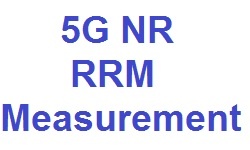In 5G NR, the Sync Signal/PBCH block (SSB) burst is consists of multiple SSBs. These multiple SSBs are associated with the different SSB indexes and with the different transmission beams other than CSI-RS signals can also be configured for beam management and measurement. The measurement procedure is a UE power consuming procedure and to reduce UE power consumption, 5G NR has introduced SSB based measurement timing configuration also known as SMTC. The SMTC defines a duration and periodicity that can be used to restrict the UE measurement on the certain resources. Within SMTC period and on the configured SSB and/or CSI-RS, UE will conduct the Radio Link Monitoring /Radio Resource Management measurement.
For LTE-NR Dual Connectivity (EN-DC) the initial access and mobility are done on LTE Primary Cell (PCell) and NR Carrier Component (NR CC) will be added or released as Secondary Cell (SCell) as part of Non Standalone (NSA) operation, while in Stand Alone (SA) mode all the operations will be done directly on NR Primary Cell. Considering this, RRM requirements for LTE-NR DC (NSA) and SA are partially different. Below tables summarizes the RRM requirements. These requirements guarantee the initial access and mobility performance for the LTE-NR DC, Supplemental Uplink (SUP), and NR-NR Carrier Aggregation (CA).
These measurement can be divided into three category based on applicability i.e. Measurements Specific to NSA Mode only, Measurement Specific to SA mode Only and Measurement Common to both (NSA and SA).
RRC-IDLE State Mobility
- Specific to NSA Only
- None
- Specific to SA Only
- Cell selection e.g. finding a suitable cell for camping
- Cell re-selection and interruption in paging reception
- Common for Both NSA and SA
- None
RRC-INACTIVE
- Specific to NSA Only
- None
- Specific to SA Only
- Cell re-selection
- RRC-INACTIVE mobility control
- Common for Both NSA and SA
RRC Connected State Mobility Control
- Specific to NSA Only
- Random access for NR PSCell
- Specific to SA Only
- Handover
- RRC Re-establishment
- Random access for NR PCell
- RRC connection release with redirection
- Common for Both NSA and SA
- None
Signal Properties Requirements
- Specific to NSA Only
- Interruption on NR PSCell due to the operations for E-UTRA PCell/SCell or UL carrier RRC reconfiguration
- Interruption on E-UTRA PCell/SCell due to the operation for NR PSCell/SCell or UL carrier RRC reconfiguration
- Activation/deactivation SCell in SCG for EN-DC
- Specific to SA Only
- None
- Common for Both NSA and SA
- Radio Link Monitoring
- UE UL carrier RRC reconfiguration delay
Radio Resource Management Requirements
- Specific to NSA Only
- Measurement capability for E-UTRA-NR DC
- Specific to SA Only
- Measurement capability for SA NR
- Inter-RAT measurement
- Common for Both NSA and SA
- Intra-frequency measurement with gap
- Intra-frequency measurement without gap
- Inter-frequency measurement
Reference
- 3GPP TS 38.133, 5G NR; Requirements for support of radio resource management, Release 15
Related Posts:
- 5G NR RRC Timers, Counter and Constants
- 5G NR Signaling Radio Bearers (SRBs)
- 5G NR Cell Access Control
- 5G NR RRM Measurement Requirements
- 5G NR Measurement – Serving Cell and Neighbor Cell

